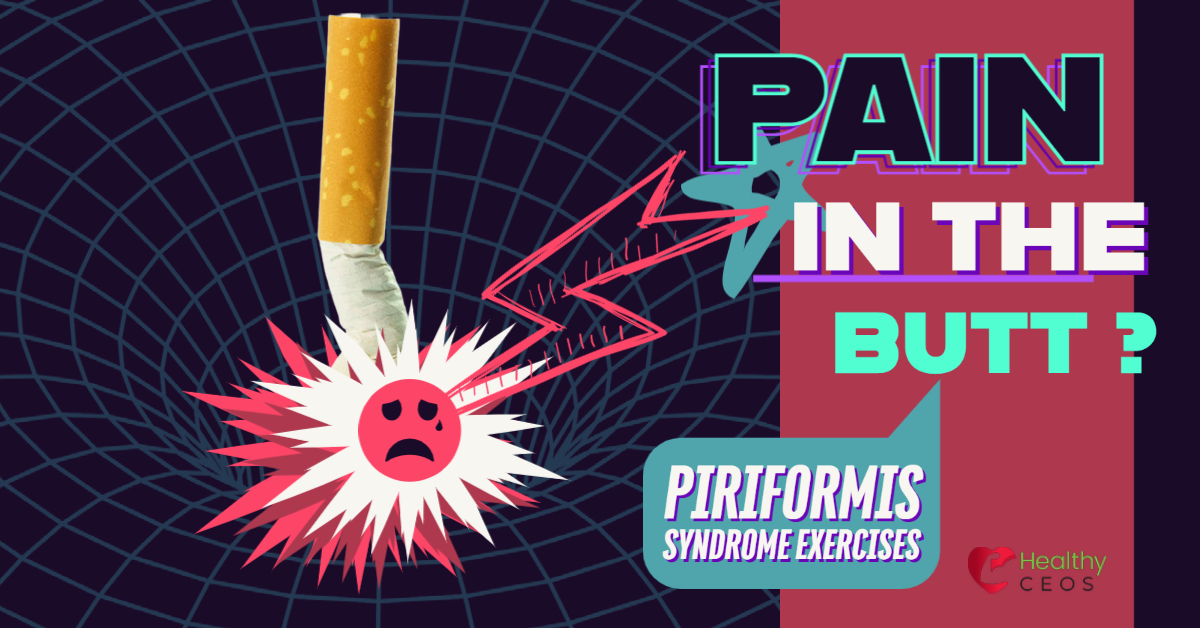Are you suffering from a literal pain in the butt? You might be dealing with Piriformis Syndrome, a neuromuscular condition that affects thousands of people each year. This article will guide you through some beneficial exercises that could help alleviate this discomfort. However, always consult with your healthcare professional before starting a new exercise regimen.
One of the most effective exercises for Piriformis Syndrome is “clamshells.” Start by lying on one side with your knees bent and feet together, creating a 90-degree angle in your hips and legs. Keeping both your torso and ankles still, raise one knee toward the ceiling slowly, taking several deep breaths before returning it to the starting
What is Piriformis Syndrome?
The piriformis muscle, located in the buttock region, plays a crucial role in enabling us to walk and maintain balance. Piriformis Syndrome occurs when this muscle irritates the sciatic nerve, resulting in pain and discomfort in the buttocks and hips. This pain can radiate down the leg, causing numbness and tingling in the feet and toes. Treatment for Piriformis Syndrome typically involves physical therapy, stretching, and exercises to reduce the pressure on the sciatic nerve. By strengthening the piriformis muscle through exercise, one can reduce the risk of developing Piriformis Syndrome and improve their mobility.
Recognizing Piriformis Syndrome can be tricky as its symptoms often mimic those of other conditions. Typical signs include a dull ache in the buttock, pain radiating down the back of the thigh, and discomfort while sitting. It can also cause sciatic nerve pain and difficulty moving the leg or hip. In some cases, the Piriformis muscle can also spasm and cause severe pain.
Exercises for Piriformis Syndrome
Relief from Piriformis Syndrome can often be found through regular, targeted exercises designed to stretch and strengthen the piriformis muscle. These exercises can help reduce pressure on the sciatic nerve by releasing tension in the piriformis muscle. Strengthening the piriformis muscle can also help to stabilize the hip joint, improving balance and coordination. Here are a few effective workouts:
1. Supine Piriformis Stretch
- Lie on your back with both feet flat on the floor and your knees bent.
- Rest the ankle of your right foot over the knee of your left leg.
- Pull your left thigh toward your chest and hold for 30 seconds.
- Repeat with the other leg.
2. Seated Stretch
- Sit on a chair and cross your right leg over your left knee.
- Keeping your spine straight, lean forward until you feel a gentle stretch in your right hip.
- Hold this position for a few seconds, then switch sides.
3. Pigeon Pose
- Start in a tabletop position on your hands and knees.
- Bring your right knee forward and place it behind your right wrist.
- Extend your left leg behind you, keeping your knee straight.
- Lean forward to intensify the stretch and hold for a few breaths.
Using a foam roller can also be beneficial in these exercises, providing a deep tissue massage to the piriformis muscle and further easing tension. After the stretch, you can move on to strengthening exercises to help support the muscle. Exercises that target the piriformis muscle, such as hip abduction, may be beneficial. Finally, make sure to stay hydrated and get plenty of rest to aid in recovery.
Safety Precautions
While these exercises can provide relief, it’s crucial to remember that everyone’s body is different. Always listen to your body and stop any exercise that causes pain. If you’re new to exercising or have any pre-existing conditions, it’s best to consult with your doctor or physiotherapist before attempting these exercises. Additionally, it is important to start slowly and gradually build up intensity and duration of your workouts. Start with lower-intensity exercises and increase as your body gets used to them. Finally, be patient and consistent with your exercise routine to see the best results.
Piriformis Syndrome can be a real pain, but with the right exercises, you can manage and potentially reduce your symptoms. Remember to perform these exercises regularly for optimal results and always seek advice from a healthcare professional if you’re unsure. Your journey to a pain-free life starts now!
Shaun Tucker is the Founder of Healthy CEOs, a revolutionary health movement helping busy people improve their performance through the 5 foundations: Energy, Mindset, Lifestyle, Nutrition & Movement.

